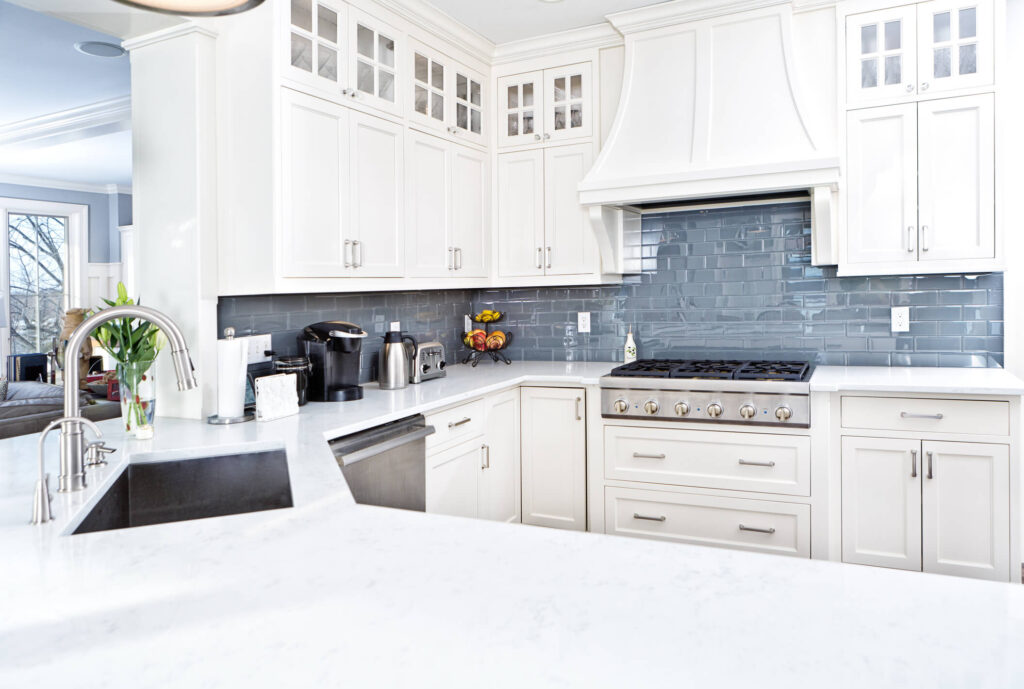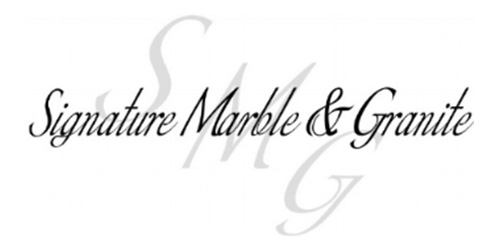How to Match a Counter and Backsplash

The best kitchen designs are both practical and visually appealing. Striking the right balance comes down to the little things, like matching the countertop and the backsplash. Homeowners frequently ask the same question: Should the backsplash match the counter, or should it contrast?
There is no clear-cut answer. Instead, the right look depends on your design preferences and the kitchen’s overall vibe. Learn how to match counter and backsplash materials in a thoughtful way to ensure your kitchen looks great and functions flawlessly.
Start with the Countertop
Which should you select first, the backsplash or the countertop? Most designers will point you toward the countertop first. As the foundation of your kitchen’s design, it covers a larger surface area, receives tons of daily use, and represents a more significant investment.
Most importantly, the countertop is installed first. This consideration has the biggest impact if you opt for natural stone, such as granite, quartzite, or marble, since each slab is unique. You won’t know the exact coloration or veining until it’s installed in your kitchen.
Once the countertop is in place, you can bring home backsplash samples and view them under your kitchen’s lighting. This approach allows you to see how different colors and finishes interact with the countertops, cabinetry, flooring, and fixtures before committing to a design. Taking this extra step ensures the final look is exactly what you want.
Choosing the Right Backsplash Material
As you consider possible backsplashes, remember that it’s more than a decorative accent. It also has the practical purpose of protecting your walls from food splatters. Because messes are inevitable, it’s important to choose a durable material that cleans up easily. Several suitable options are available:
- Ceramic tile is affordable, widely available, and offered in countless sizes, colors, and finishes. Glazed ceramic tile resists moisture and stains, which makes it a practical choice for kitchens.
- Porcelain tile is dense, durable, and water-resistant. It can mimic the appearance of stone or wood while still being low-maintenance.
- Glass tile reflects light and gives the kitchen a fresh, modern feel. This material is stain-resistant and easy to wipe clean, making it both functional and stylish.
- Natural stone tile brings warmth and organic beauty into the kitchen. It complements rustic and traditional spaces particularly well. Because stone is porous, it may require resealing to prevent stains.
- Extending the countertop material up the wall creates a seamless appearance. You can choose a standard 4-inch backsplash for subtle protection, or install the slab from the countertop to the bottom of the upper cabinets—or even all the way to the ceiling—for a dramatic, full-coverage effect.
Matching or Contrasting?
Once you have installed your countertop and decided what backsplash material you want, the next step is determining how the two should relate to each other. Sometimes, it makes sense for the backsplash to match the counter exactly or at least coordinate closely. Other times, you may prefer the backsplash to stand out as a contrasting design element. There is no universal rule, but these guidelines can help you decide:
- Match for a unified look: A backsplash that closely matches the colors and tones of your countertop creates a smooth and harmonious transition. This approach is especially effective if you have selected a stone with a solid color or subtle pattern. Continuing that subtle appearance up the wall provides a relaxed appearance that isn’t too busy.
- Contrast for visual interest: Contrasting colors and finishes add energy and character. For example, you might pair crisp white quartz with navy subway tiles to introduce a modern edge. On the other hand, combining a bold, heavily-patterned granite slab with neutral-colored tiles brings balance. Contrast ensures the countertop remains the focal point without competing for attention.
- Coordinate with cabinetry: The relationship between cabinets and backsplash is just as important as the countertop. If your countertop is dark, a lighter backsplash that matches or complements the cabinet color prevents the kitchen from feeling too heavy. Conversely, if your cabinets are white or light, a darker backsplash anchors the design.
- Play with textures and finishes: Even when colors are similar, texture can create depth. A polished gray quartz countertop adjacent to a slightly lighter gray matte tile backsplash provides contrast without introducing new colors. This subtle strategy is effective at creating visual interest.
Real-Life Style Examples
The interior design of your kitchen should influence your choices. Seeing how different styles match or contrast the counter and backsplash makes the decision easier. Here are a few scenarios that highlight different approaches:
- Traditional kitchens: This design might feature warm granite countertops paired with a soft beige subway tile backsplash. The classic materials and matching tones create cohesion while allowing detailed cabinet doors and drawer fronts to stand out.
- Rustic kitchens: Texture and natural finishes abound in rustic design. A quartzite countertop with earthy veining could pair beautifully with a rough-cut natural stone or handmade ceramic tile backsplash. The combination enhances the cozy, natural feel that rustic designs are known for.
- Farmhouse kitchens: A farmhouse kitchen might feature marble countertops with subtle veining, complemented by classic white subway tiles. It’s hard to beat this timeless, bright, and inviting look.
- Modern kitchens: In a modern setting, sleek white quartz counters pair well with a full-height glass backsplash in a bold, contrasting color. The clean lines of a slab backsplash are another option, as are three-dimensional geometric tiles. It’s all about creating a striking finish that emphasizes a modern, streamlined aesthetic.
Start Designing with Signature Marble and Granite
When deciding whether the backsplash should match or contrast the counter, the most important factor is how it makes the kitchen feel. Matching creates unity, while contrasting creates drama. Both approaches can work beautifully when you choose the materials, colors, and finishes with intention.
For more help, team up with Signature Marble and Granite. We proudly serve Springville and the broader Northern Utah area with precision craftsmanship, attention to detail, and a commitment to doing the job right. Our team explains every step, involves you in the design process, and works to ensure the final results reflect your vision. Contact us today to start designing a space that feels like home!
